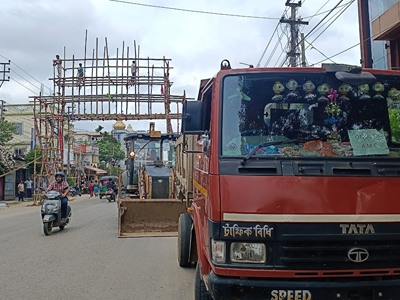



The world of Plant and Trees is the greatest life sustaining gift on earth to mankind along with water and air. The wood has been intimately travelling with humans through varies civilizations and runs like an artery in the history of mankind. More than 15,000 years ago our forefathers realized the versatility of wood and as the human civilizations grew they used wood for making spears, hunting tools, axe handles, huts and boats. Wood has long been used as the building materials with evidence showing houses built over 10,000 years ago using wood as a primary source for construction materials. Europe’s Neolithic long house–a long, narrow timber dwelling built in 6000 BC– is an excellent example. The Indian civilization grew in the midst of sylvan surroundings and as the people realized the value of trees they started special relationship with trees and forests. However, as the population grew and the use of modern science and technology specially during the last 200 years there has been steady decline of forests and now with deforestation there is more focus now on planting trees and replacement of wood as construction material. These days in most of the government buildings door and window shutters are being replaced by steel and other synthetic materials.
The question is can wood be really replaced? The answer is it cannot be at best it can be substituted. The wood is an integral part of the economy of the people in India both in the rural as well as urban areas. The wood plays a key role in reducing carbon emissions by sequestering carbon dioxide and thus plays a great role in mitigating climate change. Wood is renewable and recyclable natural resource and is good for health as it provides natural insulation. Further, it is an organic, cost effective, and anisotropic energy efficient material. A house purely made of wood produces 40% less emission than a house made of concrete. Growing of wood is ssustainable in long term as with the help of sun, carbon dioxide and water, trees can produce wood forever. By growing trees and wood it as good as laying foundation of an open bank. The researchers have shown that spending time in wooden buildings makes us feel good as the material being natural, it affects indoor air quality, moisture balance, comfort and acoustics.
In Indian context it is necessary that instead of harping too much on alternatives and substitutes we should work more on how to grow more trees so that the farmers and land owners income can be substantially increased not only by selling timber but also use the ambience of a trees in the varies landscapes of the country for ecotourism. Moreover, the wood provides livelihoods to lakhs of wood artisans, carpenters and thousands of wood traders and middle men. India exported wooden handicrafts worth over 420 million dollars during 2019- 2021 to 180 countries. It is estimated that around 500 million people are dependent on forests in India out of which 300 million are directly dependent.
The demand and supply scenario is the best way to judge the future growth of any commodity or sector. The experts have estimated that the increase in round wood consumption in India by 2030 will go up from 59 million cum in 2021 to 97.8 million cum. However, the production is only 48 million cubic meter and out of this the recorded production from government forests is only 3 million cubic meter, the rest is from private wood lots and from agro-forestry plantations.
It is therefore, necessary that wood production is attempted on private lands as a major thrust area for increasing the farmers’ income as we have substantial waste lands available for woodlots and huge potential of agro-forestry on the agricultural fields. This writer had already suggested to the Environment Minister for creation of a separate National Agro-Forestry Board at the Centre and a separate department within the Forest Ministry in the states to be headed by a senior forest officer and posting of dedicated trained staff at all levels so that legal and other hiccups for the farmers are cleared and agro-forestry can leapfrog to its potential.
At the same time research focus should be strengthened. The scientists of Institute of Wood Science and Technology (IWST) and Indian Plywood Research and Training Institute (IPRITI) are the two organization working on wood research. For the value addition transparent wood has been fabricated by IWST by using poplar wood veneer and water soluble polymer and as it exhibits high haze and light diffusing property it can be used in high end products. The scientists of Forest Research Institute have developed solar powered wood seasoning techniques for the value addition of wood at cheaper rates. Bamboo boards and Bamboo timber, fancy Bamboo bottles and other handicrafts have been developed by the IWST as well as by the Tripura Forest Department with huge orders in the pipe line.
As the scope of increasing the GDP of the country through growing of wood and creating employment is immense the government of India and states need to act fast. The man power in the wood sector need to be developed for innovative product design and research as well as for training the wood artisans. For this first the Indian Institute of Plywood Research and Training Institute should be merged with Indian Institute of Wood Science and Technology as both are located in Bangalore to ensure better and consolidated utilization of resources. The unified IWST under the Indian Council of Forestry Research and Education should be given sufficient funds and autonomy to spread the network of research in different zones of the country.
(The writer is Chairman Centre for Resource Management and Environment)





